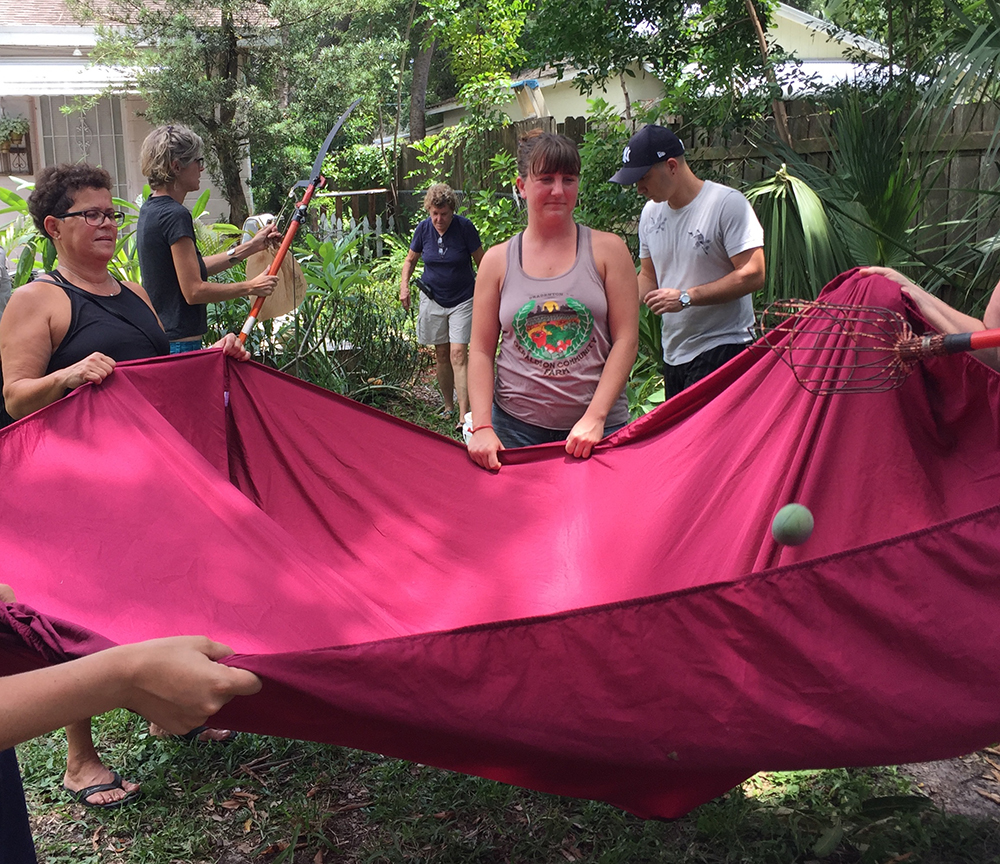When was the last time you took a friend to the airport or helped a neighbor clear the garage? Maybe you gifted a plant or looked over someone’s resume. If you think hard enough, chances are you’ve participated in some form of community or neighborly assistance in the past month, but you probably didn’t give it a second thought. The U.S. Bureau of Labor Statistics tell us roughly a quarter of Americans claim to volunteer, but that doesn’t account for the times we lent uncompensated assistance to those we love, people we know and even total strangers.
For the past three years, a local organization called the St. Pete Time Bank has been recording and facilitating these small exchanges, documenting 7,298 hours through a timebank thus far.
Timebanking is Easy
Here’s how it works: Sam joins the St. Pete Time Bank in mid- July and sees that John from the next neighborhood over needs help taming his overzealous mango tree. A day is organized and the following Saturday, Sam shows up and joins two others to help harvest. They spend an hour picking mangoes and another making chutney. All three get two hours each of ‘timebanking’ credit from John. A month later, Sam’s car won’t start. She exchanges one of her hours for assistance from a mechanic that is also a member of the timebank. A week after, she has a few accounting questions, logs onto the timebanking software and connects with an accountant offering help. She trades in her last hour to get her questions answered.
These exchanges are already happening all over St. Pete, but the they aren’t the only benefit. Members consistently report interpersonal connection as the highlight of their timebanking experience. Member Laura Oldanie was able to secure help laying sustainable flooring in her home, but also found joy in interacting with Joe, another environmentally-minded member. Sheena Qualles-De Freece, stated that for her, “the human connection goes beyond words.” She provided a ride from the hospital for an ailing member and recognized that, “a profound unconditional friendship has emerged” from the exchange.
A Global Phenomenon
Timebanking isn’t singular to St. Pete, or even America. Since the concept was formalized in the U.S. by Edgar Cahn in 1980, timebanking has spread throughout the world. In 2010, the New Zealand city of Christchurch was devastated by a 7.1 earthquake. Community organizers who previously studied with Cahn in the U.S. and implemented a timebanking hub banded together as the civil defense response. They assisted with earthquake cleanup and rebuilt by utilizing timebanking hours.
Another timebank, Lyttelton Harbour Timebank, is even used in a local school. The principal understood how the timebank wasn’t just accruing hours for the school, but was providing empowerment opportunities for its youth to organize and connect with one another through community service. Several years ago, Lyttelton Harbour Timebank Coordinator, Jill Larking, organized a “living economy conference” while schoolkids ran catering for the event. It was a way for them to teach adults, and one another, nurturing a sense of accomplishment and respect all around.

timebanking member Fred Levine’s boat.
Kids, Teens and Timebanking
Here in St. Pete, a similar project is brewing. Soon, a youth owned and operated urban farm will launch at the Enoch Davis Recreation Center. The young leaders have named it GIT (Growing Individuals Together) Farming, and spent the past year planning with a team. The Foundation for a Healthy St. Petersburg recently awarded funding to the project, aiming to help establish the farm as a member of the St. Pete Time Bank and help organize safe ways through which kids and teens can participate in time banking.
Inspired by the New Zealand timebank, the urban farm will have several membership avenues to ensure positive experiences. Young people can accrue their hours on behalf of the farm, which then can be used by the farm for special projects, like harvesting. Hours can also be banked by individual youths in-connection with a responsible coordinator or parent. A third option comes from the Lyttelton Harbour Timebank: A Community Chest can be implemented where hours that members accrue that they don’t need or want can be gifted as a surplus for those who haven’t banked any time credit of their own, but might need immediate assistance.
The practical applications are truly remarkable. If you’ve got a mind to execute your New Year’s resolution, you can do it with the St. Pete Time Bank motto in mind: “Where your time counts when you’re off the clock.”
To learn more about Timebanking, check out Edgar Khan’s book, No More Throw-Away People or visit the local chapter website: stpete.timebanks.org



